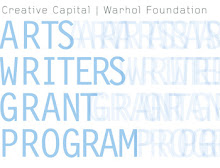 At the Armory: a Leo Villareal light sculpture reflected in a David Levinthal photograph, Gering & Lopez Gallery, March 2009
At the Armory: a Leo Villareal light sculpture reflected in a David Levinthal photograph, Gering & Lopez Gallery, March 2009It was the best of times, it was the worst of times, it was the age of wisdom, it was the age of foolishness, it was the epoch of belief, it was the epoch of incredulity, it was the season of Light, it was the season of Darkness, it was the spring of hope, it was the winter of despair, we had everything before us, we had nothing before us, we were all going direct to heaven, we were all going direct the other way - in short, the period was so far like the present period, that some of its noisiest authorities insisted on its being received, for good or for evil, in the superlative degree of comparison only.
Charles Dickens (1812 - 1870), A Tale of Two Cities
Dickens famously warns us against thinking of our particular times as unique, however there have been few points in my lifetime (the sixties, for sure, except I was too young to have anything to compare it to) where the extremes of best and worst were as clearly drawn as they are now. It’s a time of depression and darkness, but also of awakening and light, and we all know it. Everything this year is different from the way it was last year, and the ten years before that, and the ten years before that. It’s an epoch that will get a name, be called something, however just as people didn’t know that they were living in the Renaissance or the Roaring Twenties, we don’t know how history will remember these extraordinary times.
In the art world, everything is up for reassessment, and whether it’s the worst and best of times depends on who you talk to. If you read the
Armory Show wrap-up in the
Times today, you’d think it was going down the tubes, yet the people I spoke with at a couple of galleries (
Gering & Lopez,
Sean Kelly) were more than pleased with their return at the Armory and others even suggested that the economic downturn could turn out to be a boon for art because the prices have been discounted and rich people have nowhere else to put their money.
One thing’s for sure: the era of second-guessing the art market and thinking that it can be controlled with any amount of hype is over. Remember
Richard Prince? I didn’t come across a single piece of his in the Armory Show.
Damien Hirst? Who?
In last month’s
Art in America (February, p.33, not yet on the Web)
Dave Hickey described the previous “period”—meaning up until last fall—as one where “ ‘fairness’ (read mediocrity) proliferated. Dealers diversified their offerings to disguise their personal taste, thus eroding their better judgment.” Or, as one dealer once told me blatantly, “I don’t show what I love.” The same was true for artists, who were coached by art schools to ape certain kinds of art.
Now all we have to fall back on is ourselves. How refreshing!







